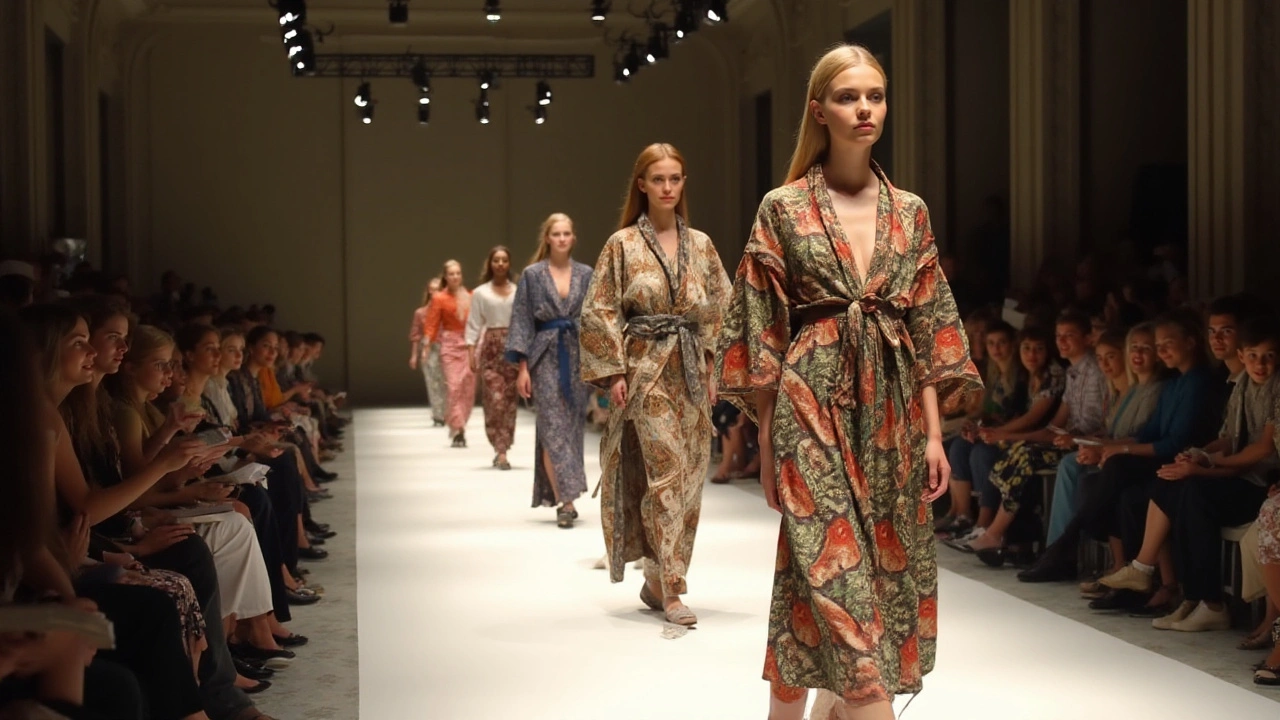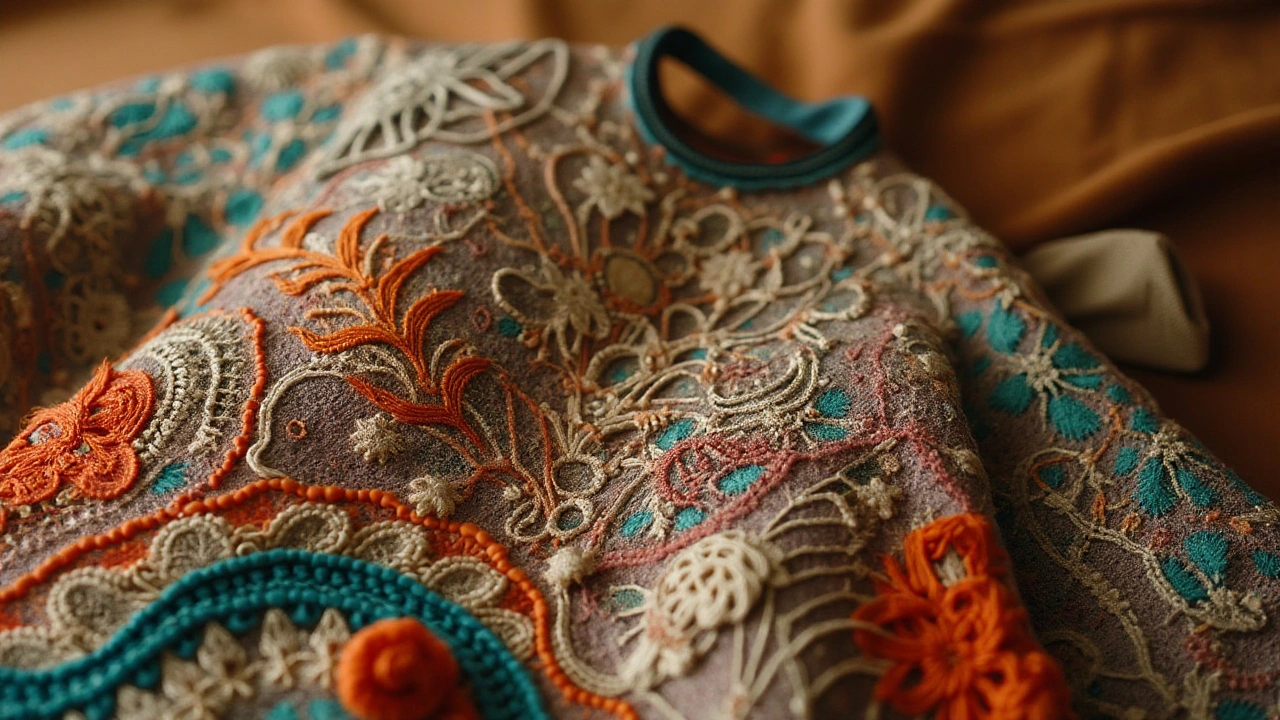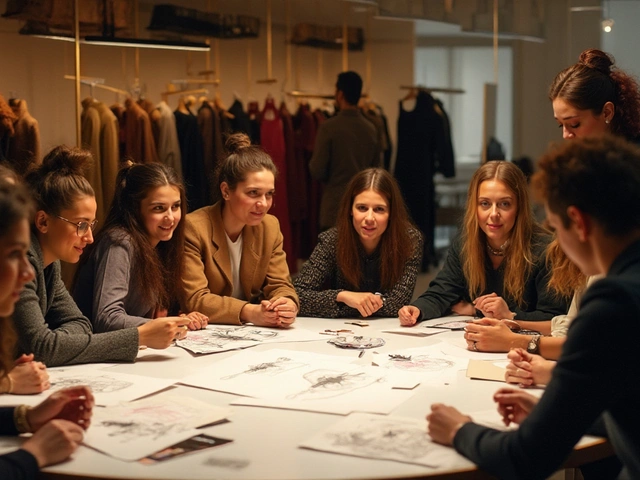The world of fashion is at the dawn of an exciting evolution. A fusion of cultural aesthetics and technological breakthroughs is paving the way for what can only be described as a revolutionary shift in style. International fashion is now a vibrant tapestry woven with threads from across the globe, reflecting a diverse range of influences that are more connected than ever before.
Designers no longer confine their collections to traditional boundaries. They are drawing upon a richness of cultural symbolism and practices, offering garments that speak stories from multiple corners of the world. This cross-cultural blending not only fuels creativity but also invites consumers to participate in a global conversation through their wardrobe choices.
Additionally, fashion is increasingly becoming synonymous with ecological consciousness. Sustainable practices are now mainstream, with designers keenly focused on reducing waste and creating garments that do not compromise the health of the planet. Coupled with the use of advanced technologies—such as AI-driven design tools and smart fabrics—the future of fashion is set to be both sustainable and innovative.
- Cultural Influences in Modern Fashion
- Sustainability and Ethical Fashion Practices
- Technology's Role in Fashion's Future
- Blending Tradition with Innovation
Cultural Influences in Modern Fashion
Fashion today is a breathtaking kaleidoscope of global influences that transcend mere aesthetics, speaking volumes about shared human experiences. From the intricate embroidery of India's sartorial traditions to the sharp, minimalist lines championed by Scandinavian designers, the global fashion landscape is a testament to the world’s cultural diversity. In this vibrant intermingling of styles, we see a more inclusive approach, where traditional garments from various cultures inspire haute couture and street fashion alike. This trend is part of a larger movement towards acknowledging and celebrating the rich tapestry of cultural identities worldwide.
One thriving example is how Japanese kimono aesthetics have influenced western high fashion. The beauty of the kimono lies in its simple lines and profound cultural significance, which have intrigued designers like John Galliano and Alexander McQueen. This has resulted in collections that honor traditional craftsmanship while presenting them as cutting-edge contemporary fashion. Similarly, African prints and textiles have made a significant impact on global trends, with designers like Stella Jean and Ozwald Boateng incorporating bold patterns and vibrant colors into their collections, bridging the gap between African heritage and global fashion.
"Fashion is not just a language of clothes, it's a language of cultures," notes renowned designer Olivier Rousteing. "The beauty of cultural influences lies in their ability to communicate our shared humanity in an ever-globalizing world."
Moreover, the advent of social media has amplified these cultural exchanges, making the world smaller and more connected. Platforms like Instagram and Pinterest act as windows to distant lands, inspiring designers and trendsetters to explore and appreciate styles from various cultures. British fashion houses might draw inspiration from Maasai beadwork, while California streetwear brands might incorporate South American motifs. Such cross-cultural borrowings not only enrich the fashion scene but challenge and expand traditional notions of beauty and style.
In response to this global blending, several fashion weeks around the world have become showcases of cultural fusion. Events like the São Paulo Fashion Week and Dakar Fashion Week highlight regional designers who reinterpret global fashion through local lenses. These events not only endorse cultural uniqueness but also present opportunities for dialogue and understanding. They stand as platforms where young designers can present fashion as a canvas for cultural storytelling, reminding us that clothes can be both an individual statement and a collective narrative.
As the fashion industry becomes more conscious of its cultural impacts, it's imperative to engage meaningfully with these diverse influences. There is a growing movement towards ensuring that cultural appreciation doesn't slip into appropriation. Brands and designers are now, more than ever, investing time and resources in understanding the histories and significances of the designs they adapt, often collaborating directly with artisans and cultural consultants. This commitment not only promotes ethical practices but also fosters genuine respect and admiration for cultural artistry worldwide.

Sustainability and Ethical Fashion Practices
Sustainability has become more than just a buzzword in the fashion trends landscape; it is a fundamental revolution in how the industry operates. Ethical fashion practices are reshaping the fabric of fashion itself, influencing how brands create, consumers buy, and everyone cherishes clothing. This new wave insists on transparency across the entire production process, encouraging practices that not only respect the environment but also the individuals who craft each piece.
At the heart of this push towards sustainability is a commitment to reducing waste, both in materials and in the final products. Many leading brands are turning to recycled fabrics or organic materials, which offer a reduced ecological footprint without sacrificing style or quality. For example, companies like Patagonia have pioneered recycled polyester, crafting their goods from discarded plastics. This approach doesn't just preserve resources but actively cleans up existing waste. In parallel, the rise of plant-based dyes and non-toxic processes helps in creating garments less harmful to both skin and nature.
Fashion's journey towards sustainability also involves a focus on longevity. 'Buy less, choose well, and make it last,' as the late fashion designer Vivienne Westwood famously advised, becomes a mantra echoed through the industry. Brands like Eileen Fisher have introduced 'take-back' programs encouraging customers to return old items for renewal or recycling, supporting a circular economy model. This contribution is crucial in combating the pervasive nature of fast fashion, where high turnover rates of cheap garments take a hefty toll on the environment.
"We must transform the industry into a force for the good of people and the planet," says Stella McCartney, a longtime advocate for sustainable fashion.
This transformation is further nurtured by innovative business models emphasizing collaborative consumption. Rental services and 'wear on demand' platforms are sprouting, making fashion more accessible while decreasing individual consumption. Companies like Rent the Runway and Fashion to Figure allow customers to enjoy new styles without the commitment or wastage involved in ownership. This not only democratizes access to high fashion but poignantly addresses environmental concerns.
Global fashion brands are also beginning to realize the ethical implications of their supply chains. Cultivating fair labor practices is becoming a cornerstone of ethical fashion. Initiatives stretch beyond fair wages to ensure safe, equitable working conditions. This ethical production battle is both crucial and complex, demanding vigilance and transparency. The trailblazers in this field set an important precedent for companies that seek to follow an ethical path.
Adopting these sustainability practices is not merely a trend; it reflects a profound shift in consumer mindset. The desire for accountability and ecological responsibility is pushing the industry to redefine norms, and as a result, fashion is becoming a leader in sustainable industry practices. It's an exciting era, transforming how we dress and how these choices affect the world we live in.

Technology's Role in Fashion's Future
The interplay between technology and fashion is shaping a new era where the impossible becomes possible. As the digital age advances, the future of fashion is aligned closely with technological innovations that promise to redefine how we create, market, and consume apparel. Technologies like Artificial Intelligence (AI), Virtual Reality (VR), and 3D printing are not just futuristic concepts—they are actively transforming the global fashion industry, turning imagination into tangible experiences.
AI, for example, is revolutionizing fashion design by providing insights into consumer preferences, thus allowing designers to tailor their creations to specific audiences with remarkable precision. Through advanced data analytics, AI is enabling brands to predict trends with uncanny accuracy. A study by McKinsey highlights how using AI-driven design insights can boost profitability by improving product alignment with consumer demand. This precise targeting is essential in the increasingly competitive landscape of today's global fashion.
In the realm of retail, VR has begun to dismantle the physical barriers of shopping, offering consumers immersive experiences from the comfort of their own homes. Virtual try-ons have gained popularity, especially during global disruptions, allowing customers to see clothing on a 3-dimensional avatar that matches their body type. This technology not only personalizes the shopping experience but also significantly reduces return rates, providing environmental benefits by decreasing logistical footprints.
"Virtual reality is not just a substitute for in-store shopping; it's a new way to experience fashion," asserts Francesca Rosella, co-founder of cutting-edge fashion house CuteCircuit.
3D printing, another groundbreaking technology, has introduced a new wave of innovation in material utilization and mannequin-free hotspot manufacturing. This technique allows for unprecedented creativity, where designers can experiment with unusual shapes and structures previously impossible with traditional methods. By using 3D printing, the fashion industry can also embrace sustainability by producing zero-waste garments, a crucial step towards minimizing the ecological impact of fashion production.
The integration of wearables and smart textiles into everyday fashion combines aesthetics with functionality. These advancements are rapidly gaining traction, catering to a tech-savvy generation that seeks both style and convenience. From clothing that monitors health metrics to garments with built-in climate control, technology makes fashion a blend of comfort and intelligence. This trend reflects a broader push within the industry towards creating holistic lifestyles centered around fashion.
The marriage of fashion and technology is typified by collaborations between tech giants and fashion houses, striving to meet the expectations of a digitally native audience. One prominent example is Google's partnership with Levi's to create a smart jacket that interacts with digital devices. This synergy indicates a promising path where sectors converge to expand what fashion trends can achieve in our day-to-day lives.
As we look ahead, the role of technology in fashion will surely grow, leading to innovations we have yet to imagine. It's this intersection of tradition and technology that will guide the future of fashion, making it more sustainable, personalized, and ultimately, more connected to our personal journeys and the world around us.

Blending Tradition with Innovation
Fashion's ability to bridge past and present is its most timeless quality. As cultural heritage and cutting-edge technology collide, there is a fascinating synergy taking place on runways and streets across the globe. This section delves into how classical elements are being infused with modern-day ingenuity to redefine the boundaries of international style. Traditional Japanese kimonos, for example, have found new life as inspirations for structured yet fluid garments offered by avant-garde designers. This transformation respects the historical significance while embracing contemporary form.
Brands like Chanel and Dior frequently revisit archives to revive iconic patterns and silhouettes, subtly adapting them to suit today's style narratives. It's a thrilling dance between the classic and the cool, which not only maintains but also elevates the prestige of vintage artistry as a salient part of modern fashion identity. By leveraging technology like 3D printing, designers are able to recreate intricate details that were once only possible by hand, making luxury more accessible and varied. Also notable is the resurgence of traditional craft techniques like embroidery and weaving, readily paired with advanced materials.
Giorgio Armani once said, "Elegance is not standing out, but being remembered." In the current fashion landscape, this philosophy translates into innovative designs that prioritize substance over flash. Take, for example, Stella McCartney, who marries Britain's royal tailoring traditions with her visions for sustainable fashion. Her collections include eco-friendly textiles, preserving both environmental health and stylistic heritage. Or consider the rise of African prints by designers like Duro Olowu, who revive traditional motifs with contemporary color palettes and silhouettes that captivate the global audience.
In harnessing both the old and the new, fashion not only preserves diverse cultural legacies but also pushes towards a more inclusive world. The use of blockchain for authenticating the provenance of heritage garments reflects how tech-savvy solutions can support preservation efforts. Through initiatives like these, the industry is not just looking at what was fruitful but is opening avenues for collaboration and imaginative synthesis. The result is fashion that is not only worn but tells a story, woven between the threads of history and the promise of tomorrow's creativity.
The influence of tradition in shaping innovative fashion presents a roadmap for the future. Consider the rise of cultural fashion showcases. London Fashion Week 2023, for example, dedicated a segment to indigenous and ethnic fashion, showing how ancestral wisdom can peacefully coexist in harmony with today's sartorial needs. As brands continue to balance these dual forces, they cater to a clientele that appreciates innovation shaped by an understanding of past triumphs and experiments. Notably, a survey by Global Fashion Studies revealed that 70% of millennial consumers are more likely to buy from brands that integrate cultural narratives with novel designs. This statistic further underscores the market demand for such synthesis.





